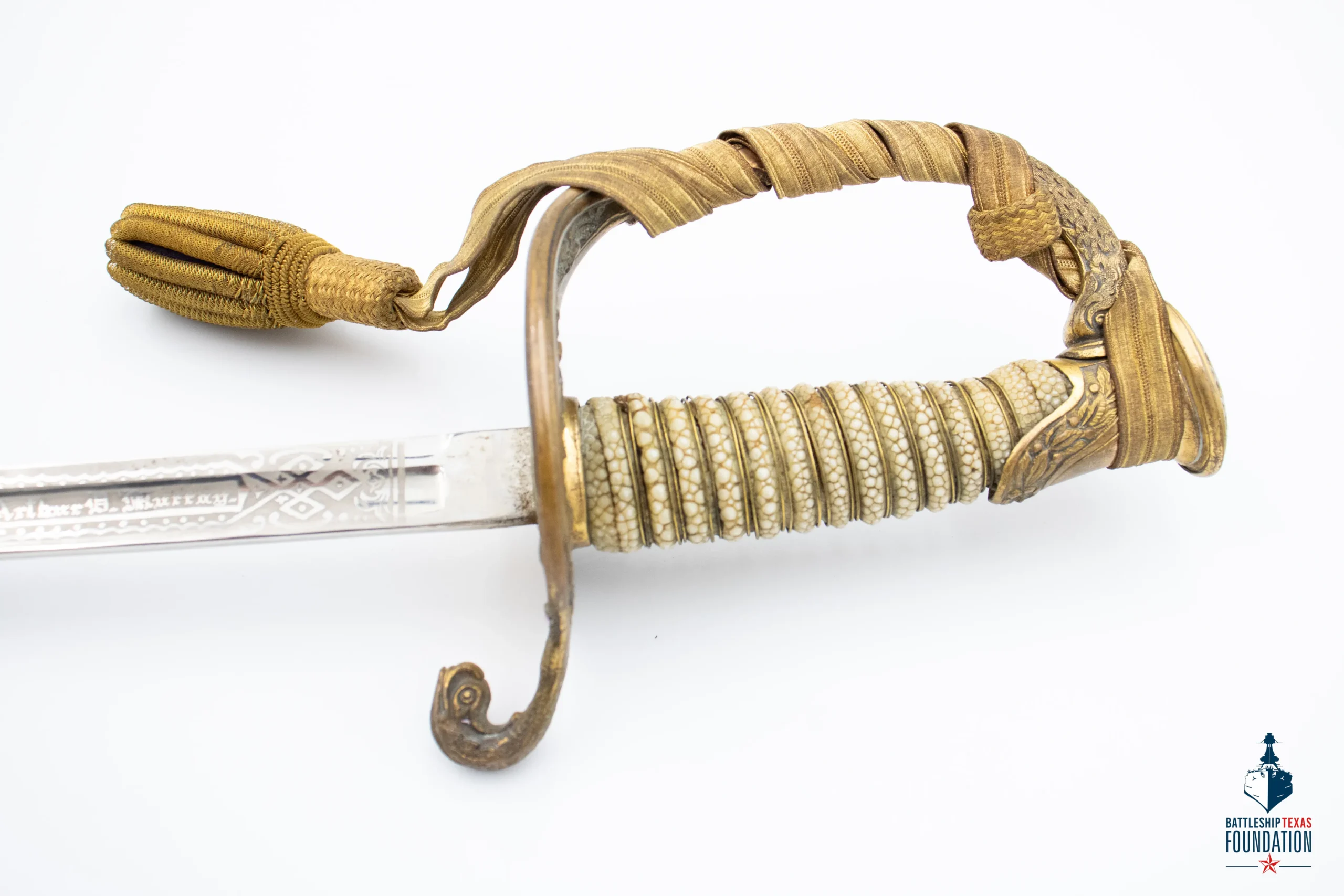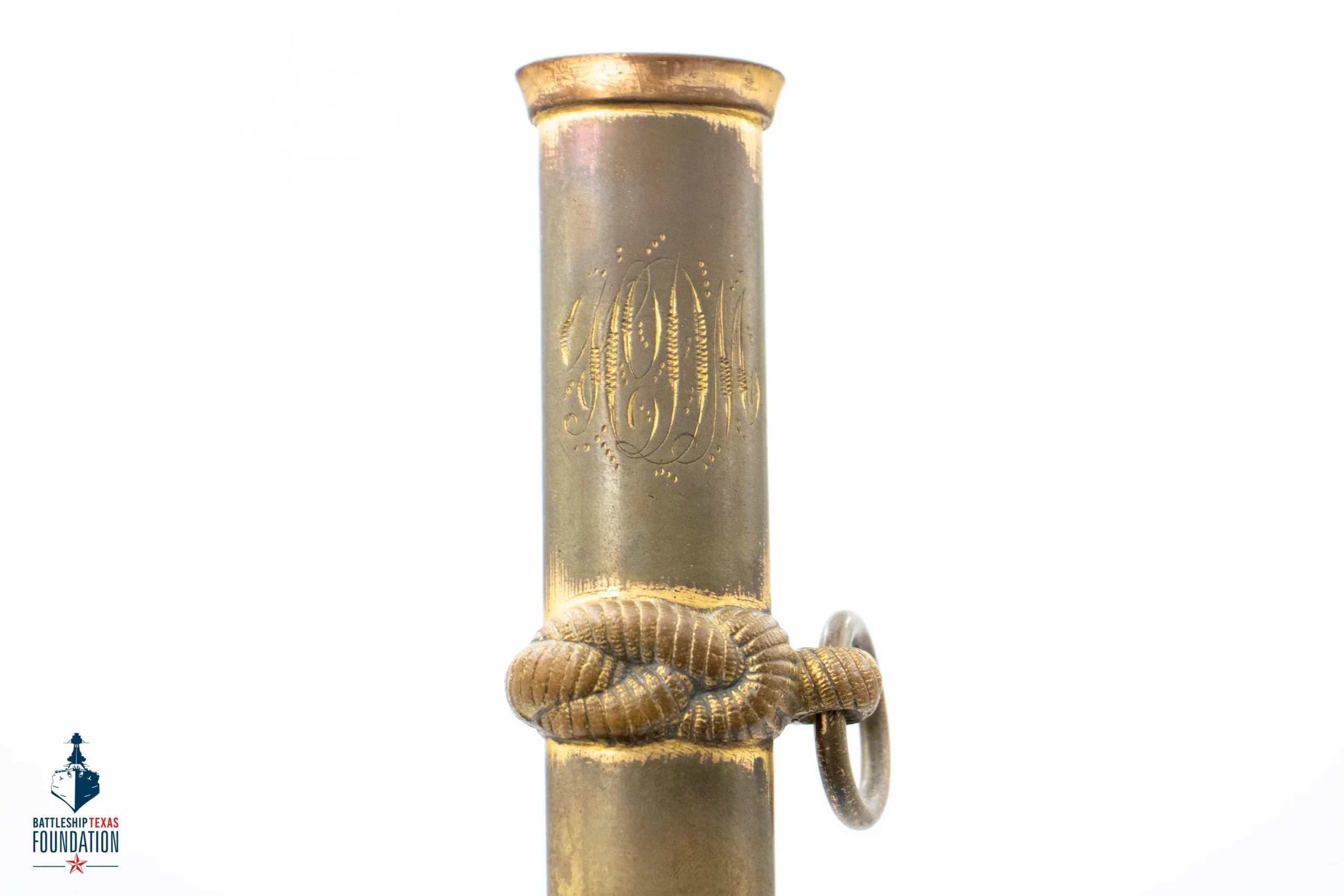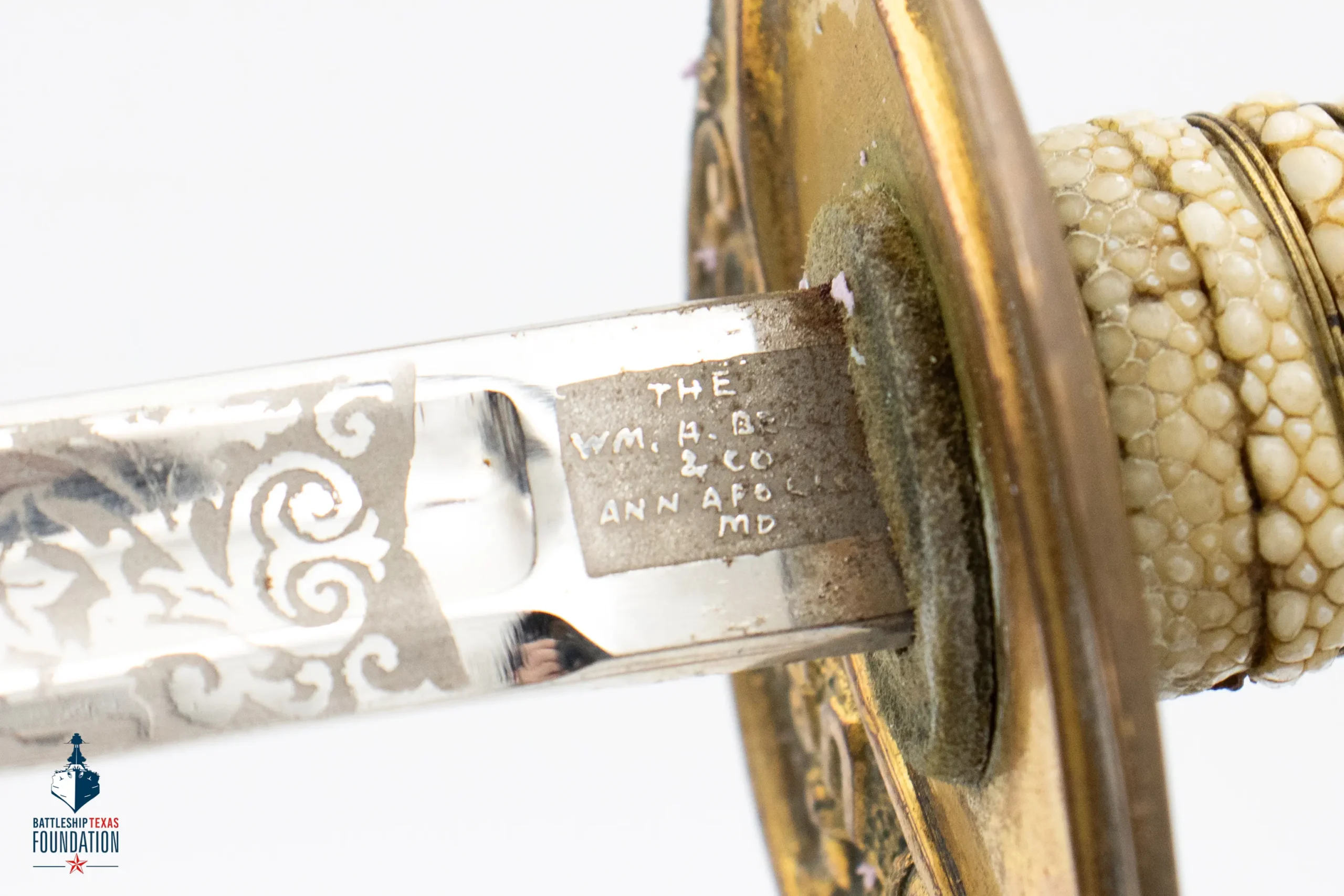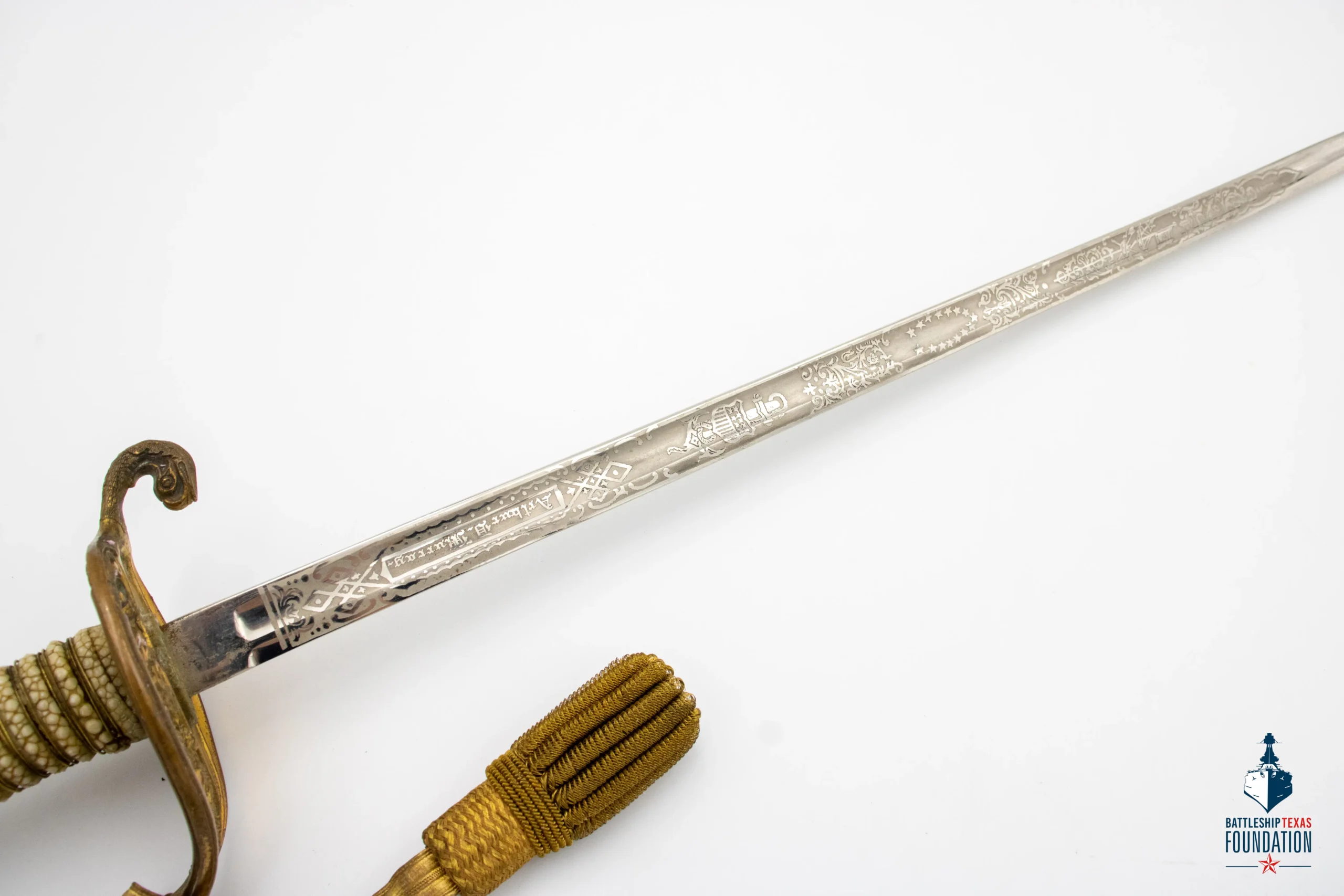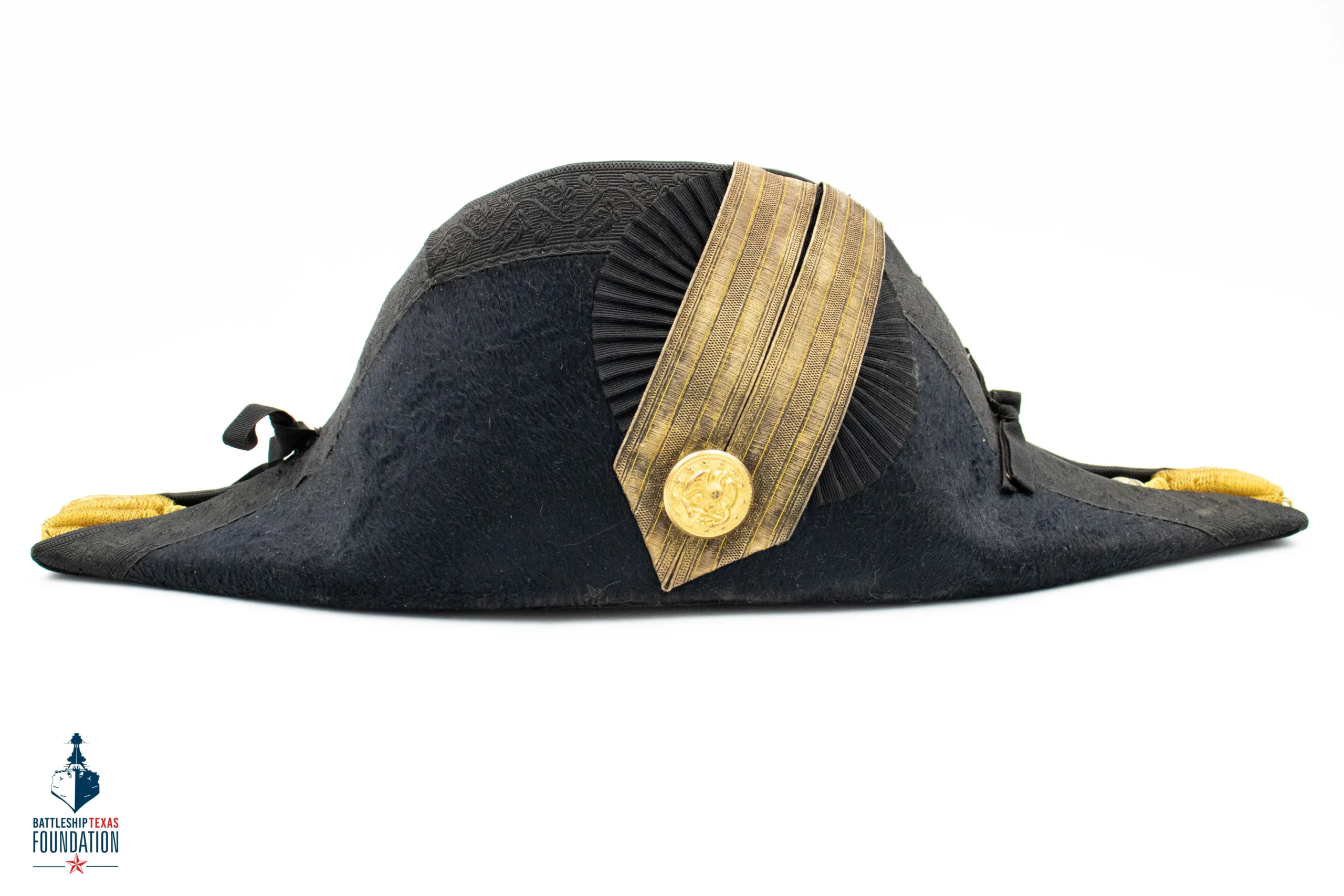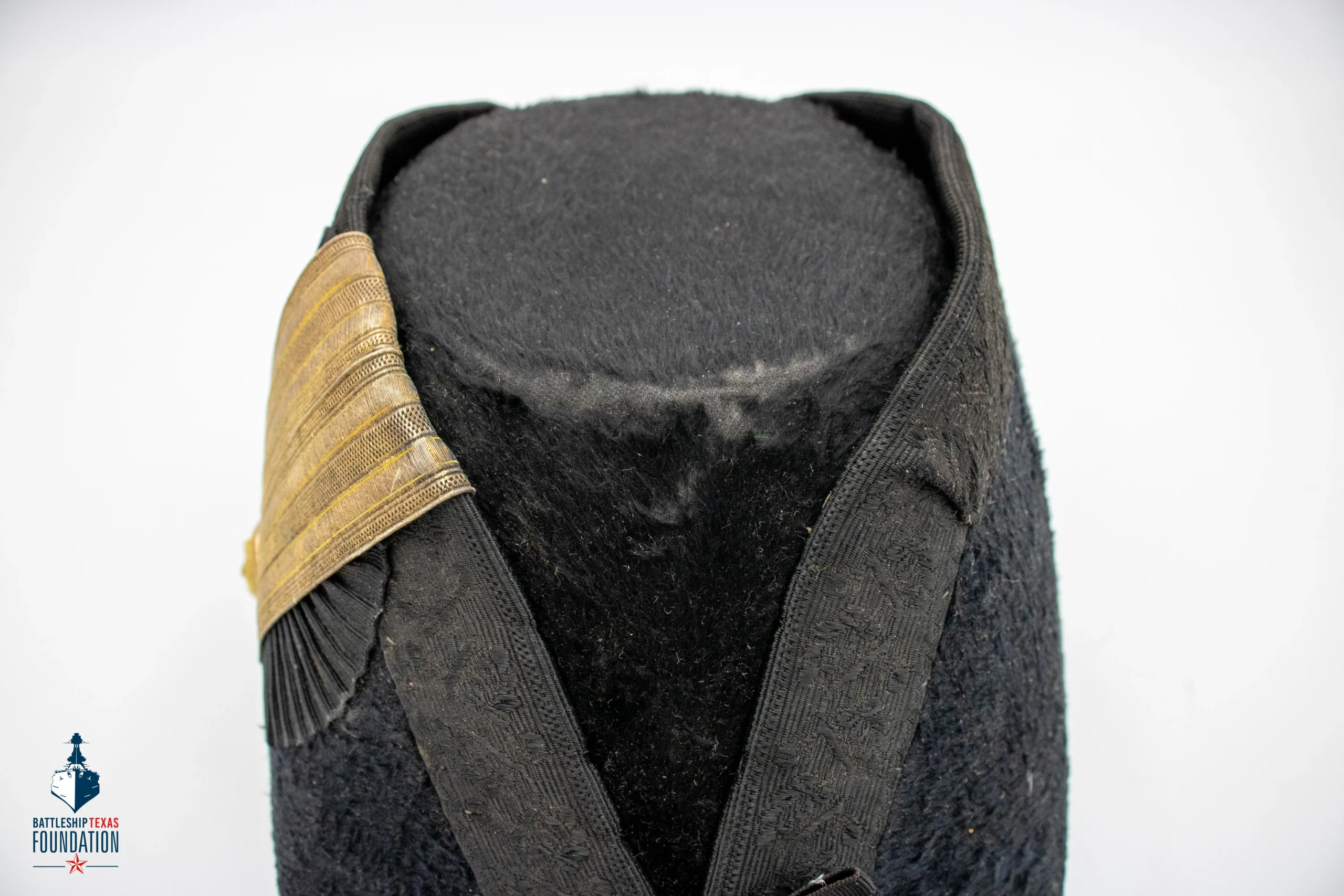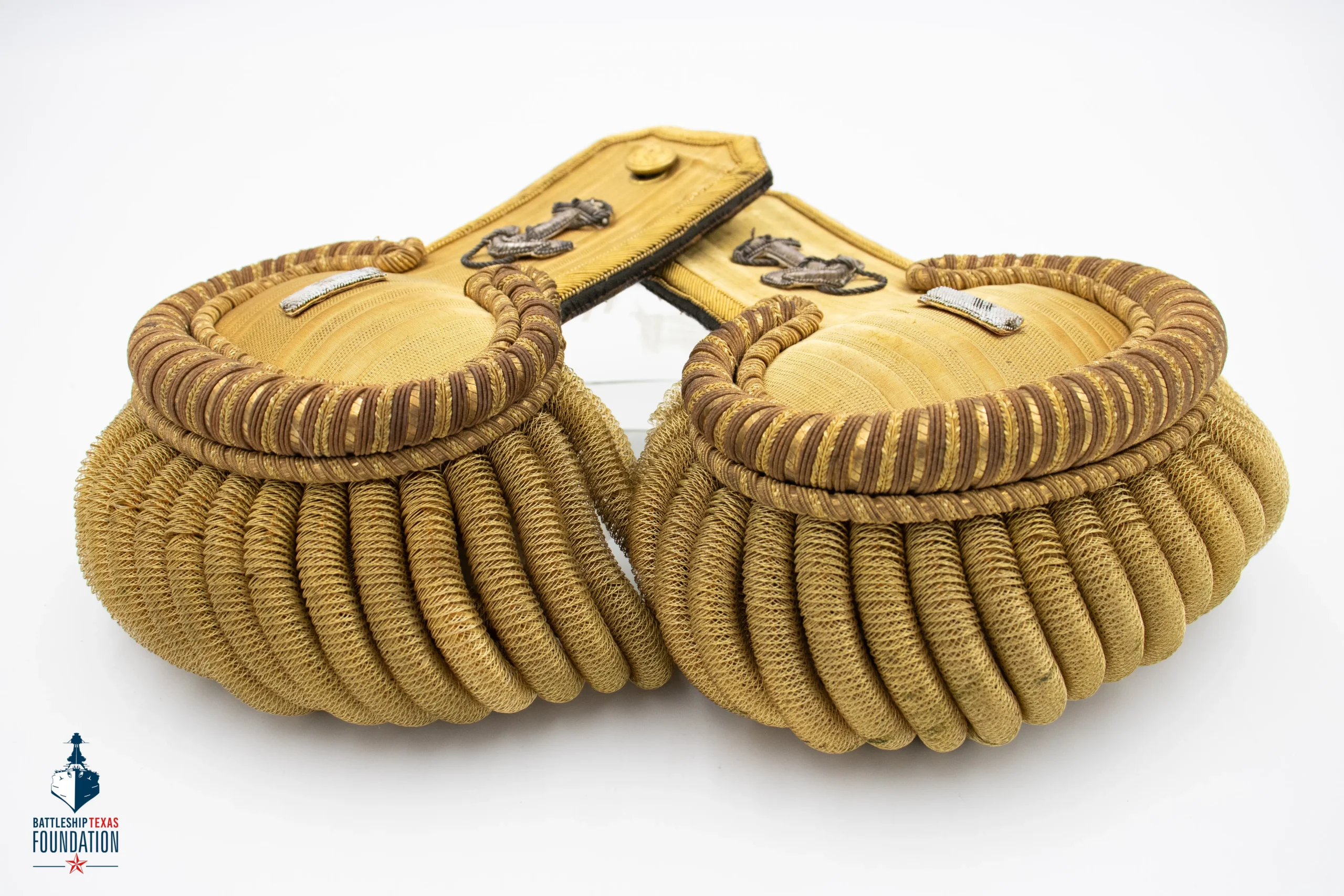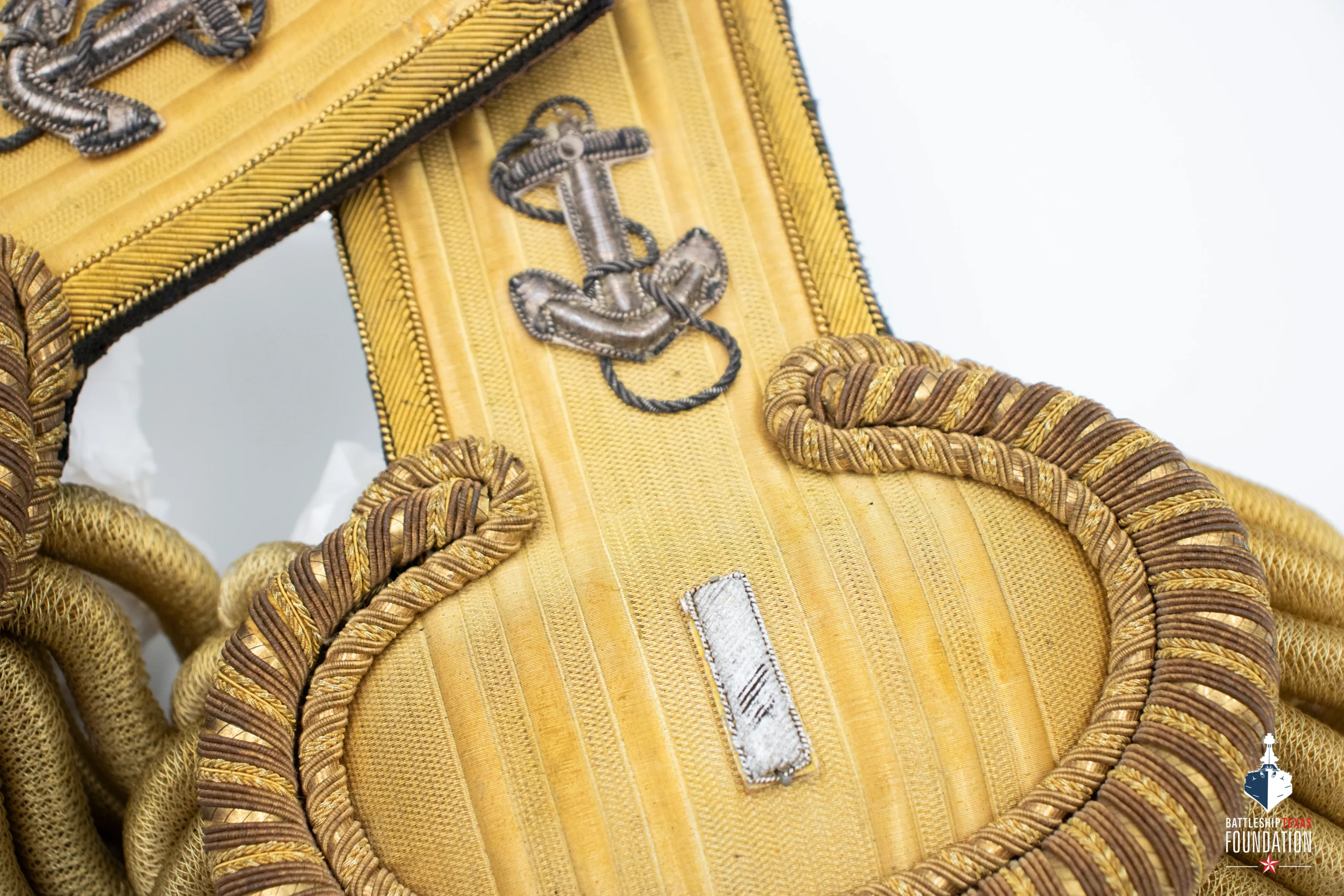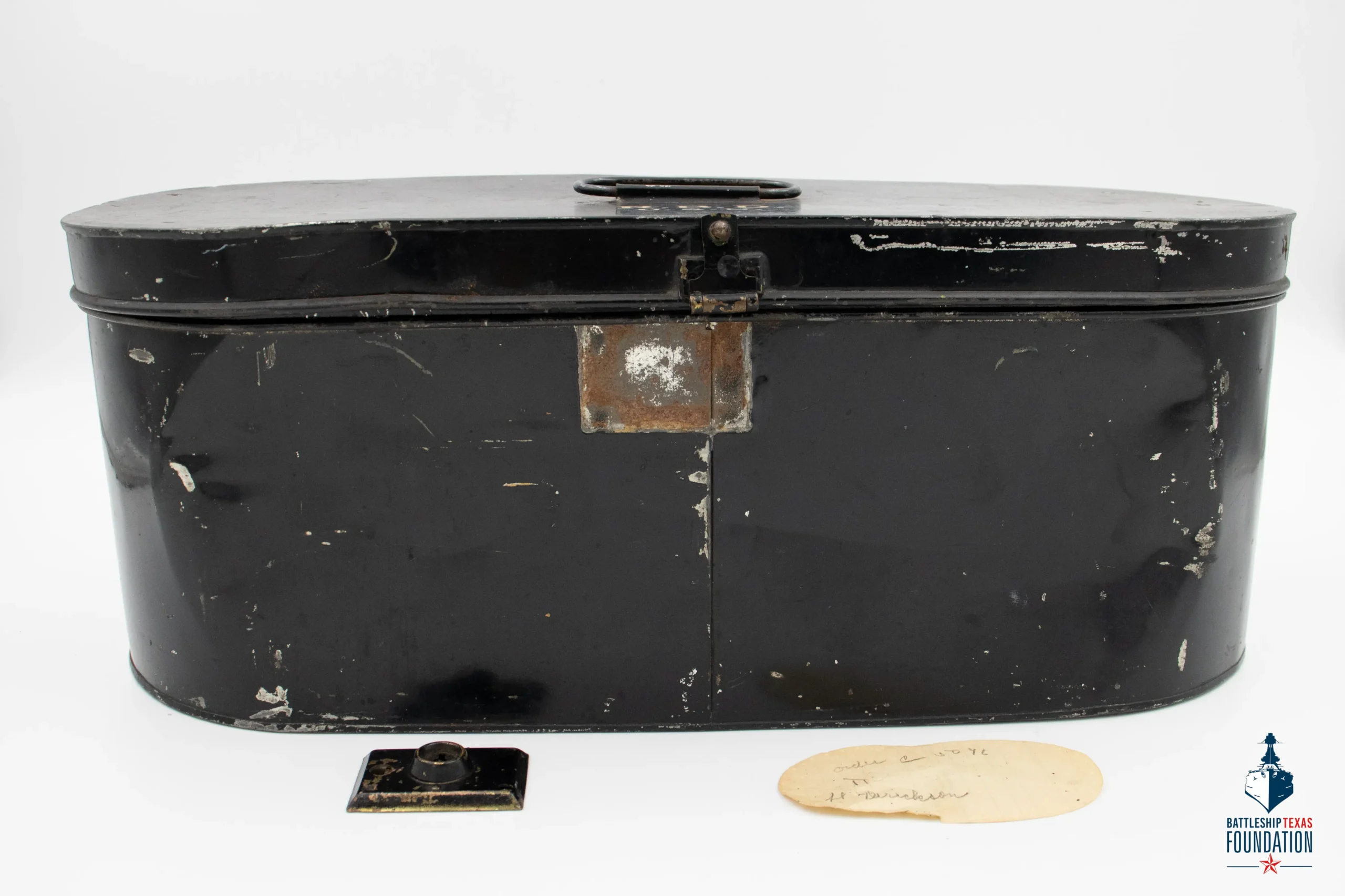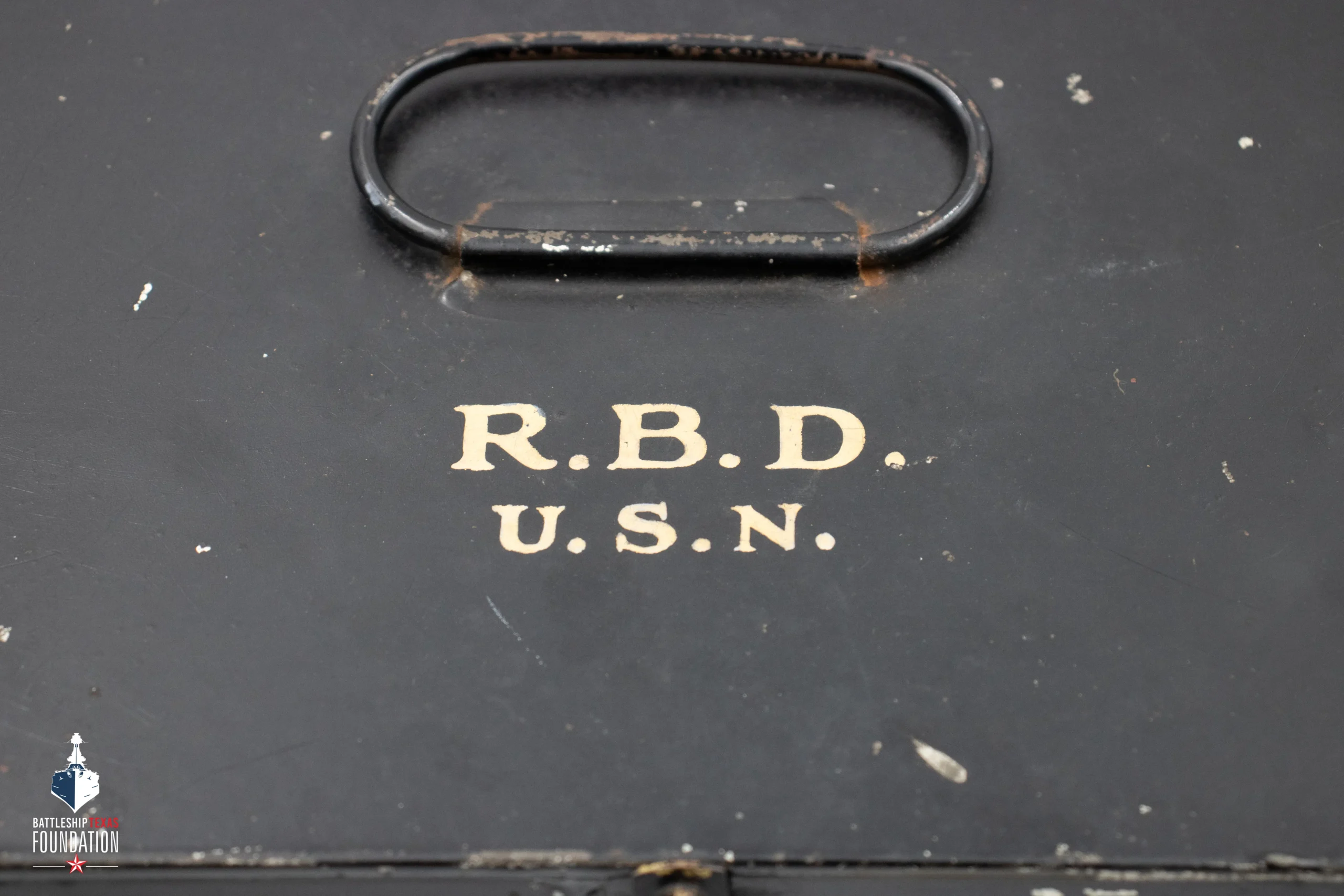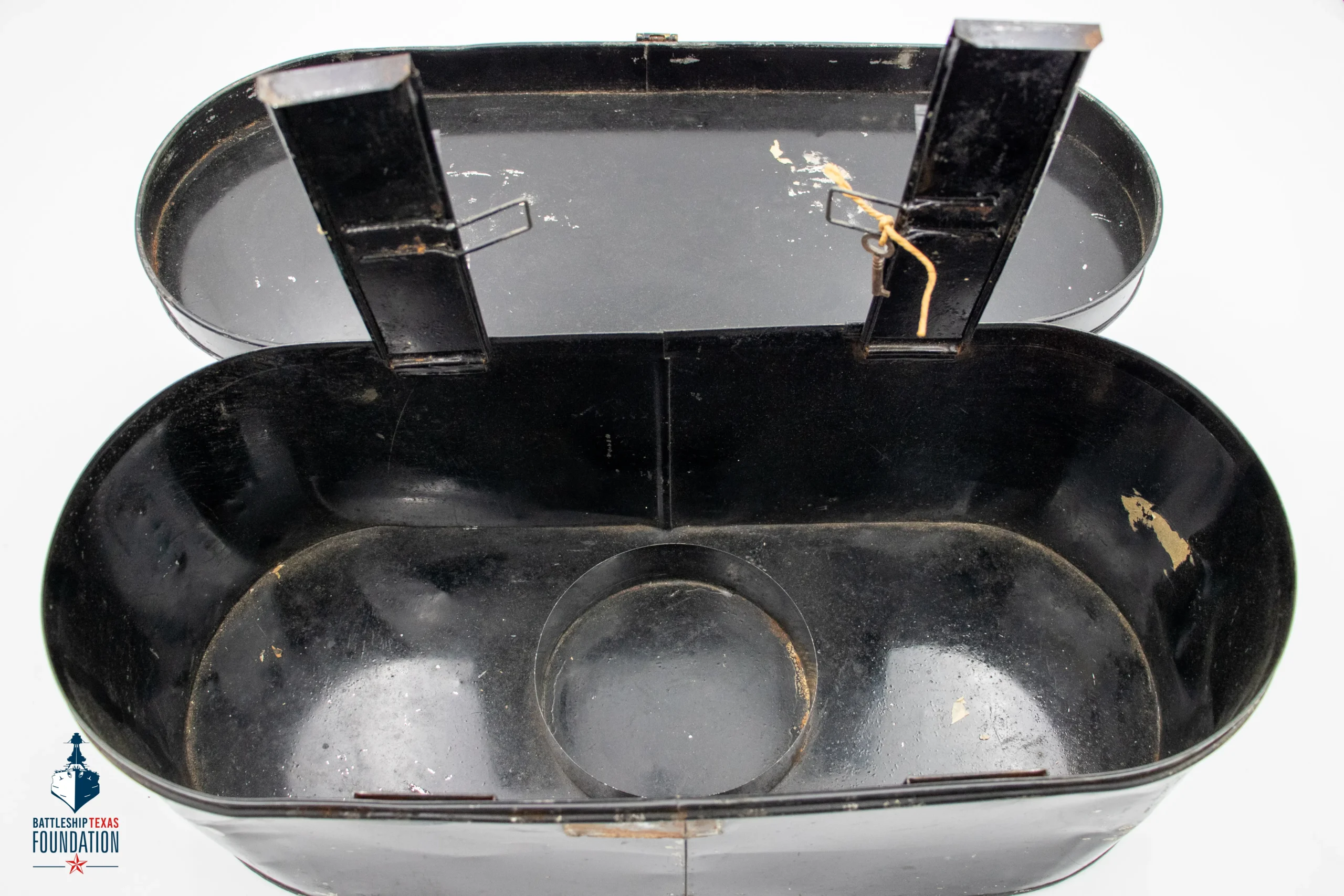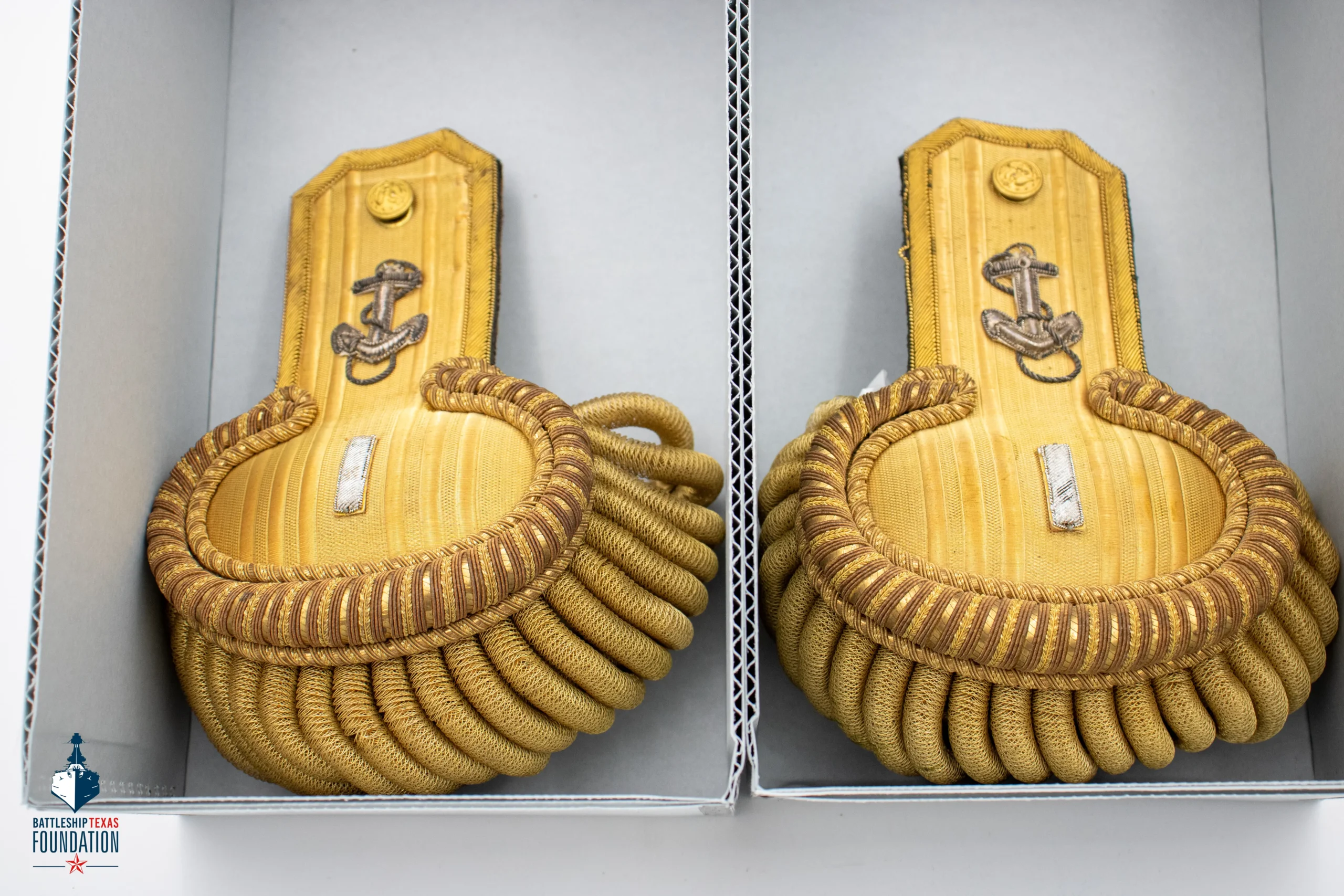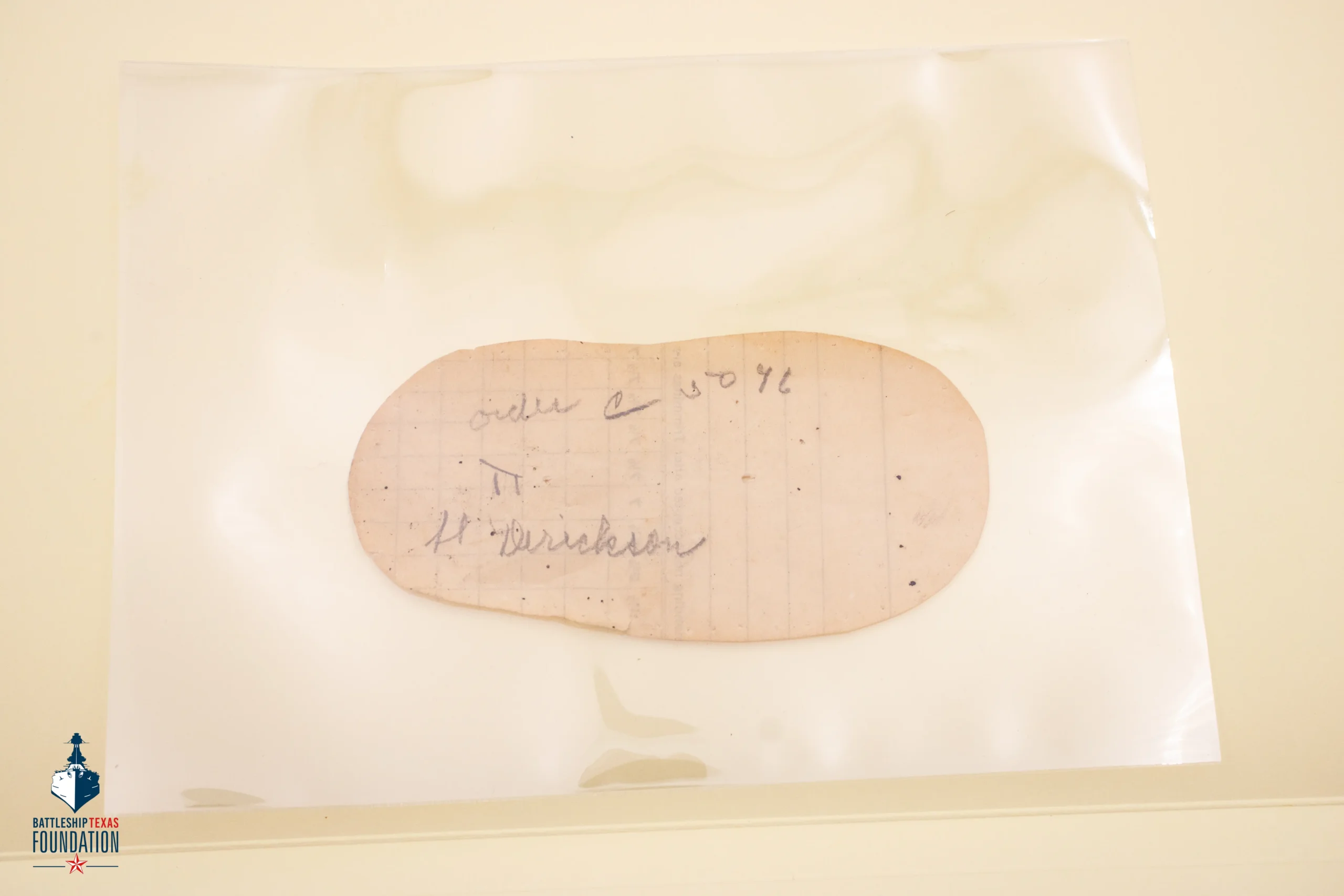Artifact Highlight: Sword, Bicorne, & Epaulettes
Posted by James Burke on July 29, 2024

As we prepare to reopen Battleship Texas as a fully realized museum, we should all remember that while the ship itself is an artifact, other articles of the crew and pieces of the ship’s history come to the Battleship Texas Foundation. While our job is to restore and preserve the ship, we must also preserve the history of her crew and those items their families give to us. As we build off Texas Parks and Wildlife Department’s over 40,000 item collection, Battleship Texas Foundation’s may seem small, but with new items coming in each week, we have the opportunity to highlight some of the lesser-known aspects of the ship’s history from 1914 to 1948. The following artifacts are uniform articles worn by officers on state occasions and ceremonies, such as a military ball, change of command, parade, or other events equivalent to white tie dress.

The first item the Battleship Texas Foundation received was an officer’s 1918 naval sword from the family of Arthur D. Murray. The sword is an 1852 design used until World War II. Murray likely received his sword in 1918 upon graduation from the Naval Academy in Annapolis, Maryland, based on the marking etched into the base of the blade. Battleship Texas Foundation also received an officer’s epaulettes and bicorne hat, owned by Lt. (jg) Richard B. Derickson, who bought them in 1933. Derickson’s epaulette presentation also originated in 1852, where deck officers wore one on each shoulder, with the foul anchor insignia on each. Officers wearing the bicorne hat stretch back to their popularization in the early nineteenth century and beyond. While the histories of these articles of naval officer’s attire are long, they both saw themselves largely fazed out by the end of World War II. The sword’s inclusion in standard issue uniform ended in 1942 by order of the Secretary of the Navy, and the bicorne hat and epaulettes were phased out in the US Navy by 1947. The history and preservation of ceremonial uniform articles now falls to the Battleship Texas Foundation.
The sword of Arthur D. Murray is unique to Battleship Texas Foundation collections, being the first sword accepted by the foundation. Thus, storage and preservation hold unique challenges. While scabbards and sheaths are an iconic part of any bladed weapon, they hold drawbacks for museum storage. Keeping a sword in a scabbard is acceptable in short term periods such as transportation to the museum, but are not a viable long-term solution. Scabbards and sheaths can trap moisture inside, corroding the steel over time, even in dry environments due to the seal they provide over the weapon. Therefore, the two items are stored apart from one another to better preserve both. The pommel and other brass adornments would also benefit from dry storage to keep them from tarnishing. Keeping both the sword and scabbard in a dry environment will ensure the longevity of both artifacts.

The sword’s rayskin shagreen handle was made waterproof, and generally protected from moisture, but should still not be handled directly. While shagreen is resilient against most agents, it becomes brittle with age, and the restoration process is exhaustive. Handling of the sword by the traditional grip, even with gloves on, could damage the material over time. Swords and scabbards are stored like most firearms. A sword case, akin to a rifle case, will properly protect the sword, both from moisture and damages sustained in transport.
Richard B. Derickson’s bicorne hat and epaulettes have a much more standard method of museum storage. Derickson’s hat is covered in beaver felt, which is intended to last decades, though damages sustained are much more permanent to the artifact. The epaulettes are French made gold bullion, and regular maintenance could harm the mint finish. As with the sword, a dry environment is the best option to prevent degradation. While the material is unlike anything else in Battleship Texas Foundation collection, storage is generally the same. The hat and its corresponding epaulettes are kept in archival boxes. The only hurdle is the size of the hat at over 17” long, which exceeds the standard hat box length of 13”. Finding appropriate storage is only a matter of getting a bigger box. The epaulettes are a much easier case, both fitting neatly into smaller 12”x7” archival box. The order form for the uniform set is placed in a plastic archival sheet, then into an acid free folder, and housed in another archival box like all historical documents in Battleship Texas Foundation’s collections. The hat box will be stored by itself on the racks, similar to the personal chests of both John Lamson and Morton W. Baker.
Generous donors give new and interesting artifacts to the Battleship Texas Foundation regularly. Unique items like the ceremonial uniform affects shown here highlight often overlooked parts of the ships history which is often overshadowed by the more popular events of the Second World War. Battleship Texas did much for the nation in both the First World War and interwar periods and has a history stretching from 1914 to 1948. The Battleship Texas Foundation is actively collecting historic items, photographs, and documents related to Battleship Texas (BB-35), Battleship New York (BB-34), or the other commissioned ships named USS Texas (SSN-775, CGN-39, and the first USS Texas commissioned in 1895). If you have an item that makes you say “It belongs in a museum!” please email us at [email protected] with photos and any relevant information. Our staff is working diligently to collect, accession, and archive historical items of the Last Dreadnought.

James Burke is a History PhD student at the University of Houston and has worked as curatorial staff with Battleship Texas since 2020.

